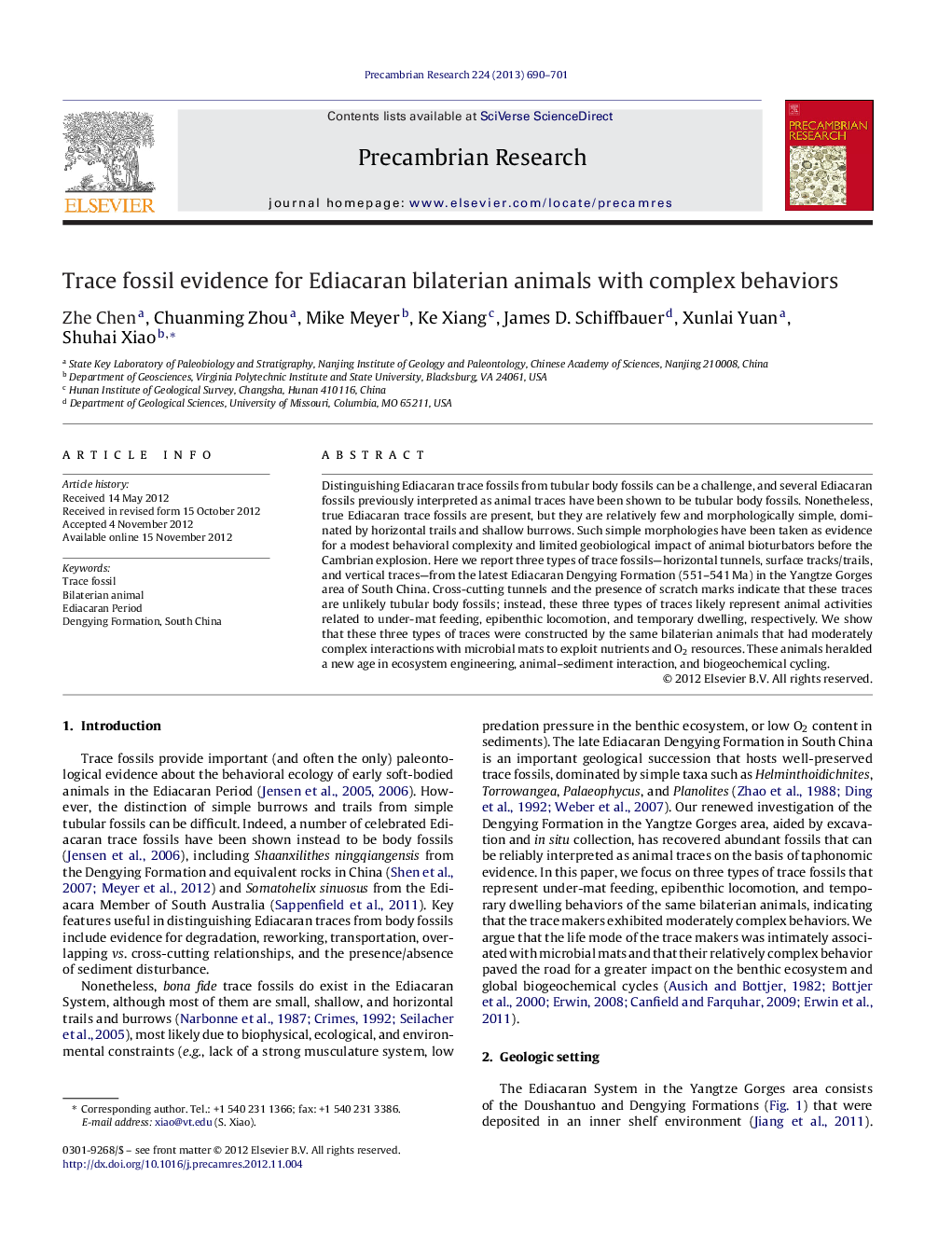| Article ID | Journal | Published Year | Pages | File Type |
|---|---|---|---|---|
| 4723370 | Precambrian Research | 2013 | 12 Pages |
Distinguishing Ediacaran trace fossils from tubular body fossils can be a challenge, and several Ediacaran fossils previously interpreted as animal traces have been shown to be tubular body fossils. Nonetheless, true Ediacaran trace fossils are present, but they are relatively few and morphologically simple, dominated by horizontal trails and shallow burrows. Such simple morphologies have been taken as evidence for a modest behavioral complexity and limited geobiological impact of animal bioturbators before the Cambrian explosion. Here we report three types of trace fossils—horizontal tunnels, surface tracks/trails, and vertical traces—from the latest Ediacaran Dengying Formation (551–541 Ma) in the Yangtze Gorges area of South China. Cross-cutting tunnels and the presence of scratch marks indicate that these traces are unlikely tubular body fossils; instead, these three types of traces likely represent animal activities related to under-mat feeding, epibenthic locomotion, and temporary dwelling, respectively. We show that these three types of traces were constructed by the same bilaterian animals that had moderately complex interactions with microbial mats to exploit nutrients and O2 resources. These animals heralded a new age in ecosystem engineering, animal–sediment interaction, and biogeochemical cycling.
Graphical abstractFigure optionsDownload full-size imageDownload as PowerPoint slideHighlights► Trace fossils from the Ediacaran Dengying Formation (551–542 Ma) in South China are described. ► Horizontal tunnels, surface tracks, and vertical traces represent under-mat feeding, epibenthic locomotion, and temporary dwelling. ► The traces are connected and were made by the same bilaterian animals with complex behaviors. ► Trace makers exploited microbial mats for food and O2 resources. ► These animals opened a new page in ecosystem engineering, animal–sediment interaction, and biogeochemical cycling.
